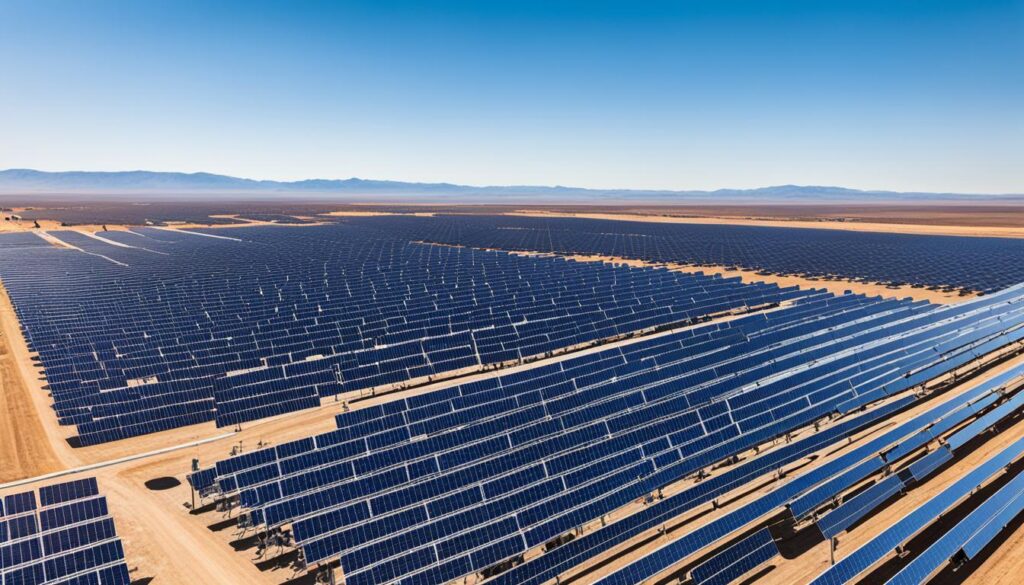Solar Plant Cost: Understanding the Investment
Solar Plant Cost: Understanding the Investment
Discover the essential factors affecting solar plant costs, including installation, infrastructure, and financing. Explore comprehensive details on solar energy cost, photovoltaic system pricing, and more.
Learn about the factors that influence solar plant investment cost and how to maximize returns. Discover how a solar plant can offer long-term savings and sustainability.
Solar power is becoming more popular for homes and businesses. But, the cost of a solar plant is a big concern for investors. This guide covers the costs of installing a solar power plant. It includes details on solar energy cost, photovoltaic system pricing, and solar farm construction expenses.

Key Factors Influencing Solar Plant Costs
Several factors impact the total solar plant cost, and understanding these can help in making informed decisions about renewable energy investment.
1. Solar Power Plant Installation
Installing a solar power plant is a big part of the cost. It includes:
- Site Assessment: Checking the location for the best solar energy.
- Design and Engineering: Making detailed plans and specs.
- Permitting and Approvals: Getting the needed permits.
- Construction and Commissioning: Putting up the solar panels and other parts.
2. Photovoltaic System Pricing
The price of a photovoltaic system changes based on several things. These include:
- Panel Type: The type of solar panel used.
- System Size: The size of the solar panel array.
- Brand and Quality: The brand and quality of the panels.
3. Solar Farm Construction Expenses
The costs for building a solar farm include:
- Land Acquisition: Buying or leasing the land.
- Site Preparation: Preparing the land for installation.
- Infrastructure: Building roads, electrical connections, and support structures.
Budgeting and Financing for Solar Projects
4. Solar Panel Array Budgeting
When budgeting for solar panels, consider the costs of:
- Solar Panels: The main part of the system.
- Inverters: Changing solar energy into electricity.
- Mounting Systems: Holding the panels in place.
5. Commercial Solar Project Finance
There are many ways to finance a commercial solar project. These include:
- Loans: Bank loans or specialized solar loans.
- Leases and PPAs: Leasing or Power Purchase Agreements.
- Tax Incentives: Tax credits or rebates.
Utility-Scale Development Cost
Big solar projects need a lot of money upfront. These projects are big and aim to supply electricity to many people. They often get cheaper as they grow but need a lot of money at first.
Solar Infrastructure Expenditure
Keeping a solar project running costs money too. This includes:
- Routine Maintenance: Regular checks and fixes.
- Operational Costs: Salaries, utility bills, and other costs.
Key Takeaways
- Solar plant costs involve several factors, including installation, equipment, and infrastructure.
- Photovoltaic system pricing can vary based on panel type and system size.
- Effective solar panel array budgeting and commercial solar project finance strategies are essential for managing expenses.
Conclusion
Knowing about solar plant costs is key for anyone thinking about solar energy. By looking at solar power plant installation, photovoltaic system pricing, and solar farm construction expenses, you can plan better. As solar tech gets better and cheaper, it’s becoming a great choice for many. By considering the above aspects, potential investors can navigate the complexities of solar plant costs and make informed decisions about their solar energy investments.
FAQ'S
Q: What are the main components of a solar power plant?
A: The main components include solar panels, inverters, mounting systems, and electrical infrastructure.
Q: How can I finance a solar energy project?
A: Financing options include loans, leases, Power Purchase Agreements (PPAs), and taking advantage of tax incentives.
Q: What is the difference between residential and utility-scale solar projects?
A: Residential projects are typically smaller and installed on individual homes, while utility-scale projects are large installations designed to supply electricity to the grid.
Q: How does solar energy cost compare to traditional energy sources?
A: Solar energy costs have decreased significantly over the years, often making it competitive with or cheaper than traditional energy sources, depending on local conditions and incentives.
Q: What are some common tax incentives for solar investments?
A: Common incentives include the Investment Tax Credit (ITC) and various state and local rebates.
Fore More Detailed Contact us

